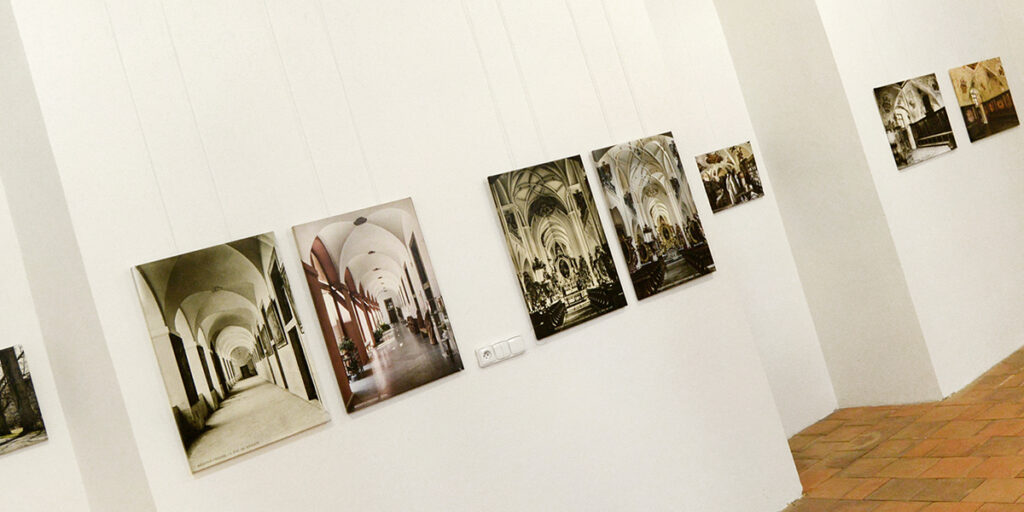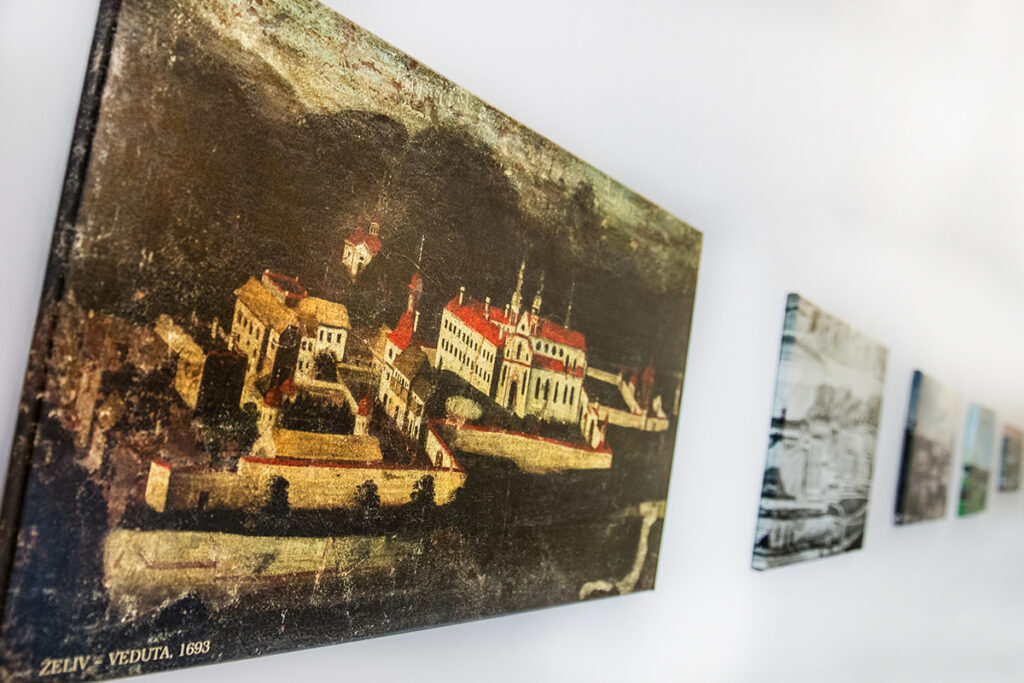
In 2019, the Premonstratensian Monastery in Želiv celebrated not only the 30th anniversary of the defeat of the communist regime, but also 870 years since the arrival of the first Premonstratensians in Želiv. During this long time, the Želiv Monastery and the Premonstratensian community experienced not only a period of economic, cultural and especially spiritual prosperity, but also a period of decline and disruption. The monastery was looted several times, first by the Hussites, later by the Swedes during the Thirty Years’ War, twice it was confiscated by the state (in 1467 by Jiřík from Poděbrady, in 1950 by the KSČ). Despite all these vicissitudes, however, the Premonstratensian community always recovered, restored the monastery and with it the economic, cultural and spiritual service for the entire region.
The exhibition gives visitors an insight into the historical construction development of the monastery and photographic copies of paintings and engravings, which depict the appearance of the monastery from the end of the 17th century to the present day. A significant turning point in the history of the monastery was the devastating fire in 1907, which is also captured in contemporary photographs. The largest part of the exhibition is devoted to well-preserved period photographs in confrontation with the current state.




The monastery was established by Czech Prince Soběslav I with his wife Adléta according to the tradition in 1139 for Benedictines who were recalled later on, and Premonstratensians from Steinfeld in the Rhineland came to the monastery in 1149. The first abbot was Gottschalk (+1184) under whose leadership the monastery flourished very well. After confirmation of the monks’ community in the Želiv monastery and after confirmation of the monastery assets by Pope Honorius III in 1226, the intensive development of the monastery could start, and the monastery administered various parishes in Bohemia as well as Moravia, the most important one of which being Jihlava.
The monastery was destroyed by a fire in 1375, then it was built again, and during the Hussite wars it was twice plundered. After those events the monastery underwent a poor existence only. The convent was dispersed all over the region and the abbot stayed mostly in Jihlava, until 1567 when the last monk died.
In 1467, the entire monastery and all its assets were pledged in favour of Trčka of Lípa, who was the marshal of the Čáslav Region. His family stayed there until 1599, and then various owners were changing in Želiv. In 1623, Marie Magdalena Trčková sold the monastery assets to the Strahov Premonstratensians and only then did the regular renovation of the plundered Želiv area start.

A great turnover occurred after election of Siard Falko as the monastery abbot originating from the Želiv community. The Baroque church and convent were renovated under his leadership, the economy was flourishing. The monastery was hit very much in 1712 when the fire destroyed most buildings together with the church. J. B. Santini, a leading Baroque architect came to Želiv in 1714 and drew up the designs for the church and convent renovation, and after eight years the buildings were renovated in the Baroque Gothic style which you can admire up to now.
The largest development of the monastery at the spiritual level started in the middle of the 17th century when the aristocratic grammar school and theological apprenticeship institute were created in the monastery. A large library was established there, equipped with a number of first copies and more than 20,000 volumes of theological and other literature. The monastery was an important centre of culture and education at that time.



The fire in 1907 had devastating impacts on the monastery. The entire equipment of the abbey and of the office of the forestry and economic administration in the Trčka castle, including the monastery museum, was destroyed. The monastery renovation belongs among the greatest merits of Abbot Salesius Roubíček. The Trčka castle has been kept in its original appearance, the prelature was rebuilt in the Pseudo-Baroque style but its internal decoration is, however, in the Art Nouveau style.
During the First Republic period, the monastery enjoyed good economic results and became a well-known both spiritual and cultural centre of the region. The Premonstratensians were expelled from the monastery in 1950, a detention camp was created there and during the upcoming six-year period more than 460 priests and friars were detained there. Also Bishop Otčenášek and František Tomášek (who became Cardinal later on) were imprisoned there without any trial and judgement, together with other priests.


After the cancellation of the camp, the entire set of monastery buildings was assigned to the Psychiatric Treatment Facility in Havlíčkův Brod which was run there until 1991. Only then could the Premonstratensians come back and start with monastery repairs. They have already managed to put some parts partly into their original condition, with the help of the government and private donators. Many other premises are still, however, waiting for repairs.
Thanks to the fact that the monastery is an architectonic heritage, unique and fascinating work by Santini, it belongs among the most important jewels of the Highlands Region. Its spiritual and cultural importance is being restored as well. The monastery organises weekend cycles of spiritual restoration, regular guided tours of the monastery with professional presentations of its history, regular music and other cultural events are held there, etc.




